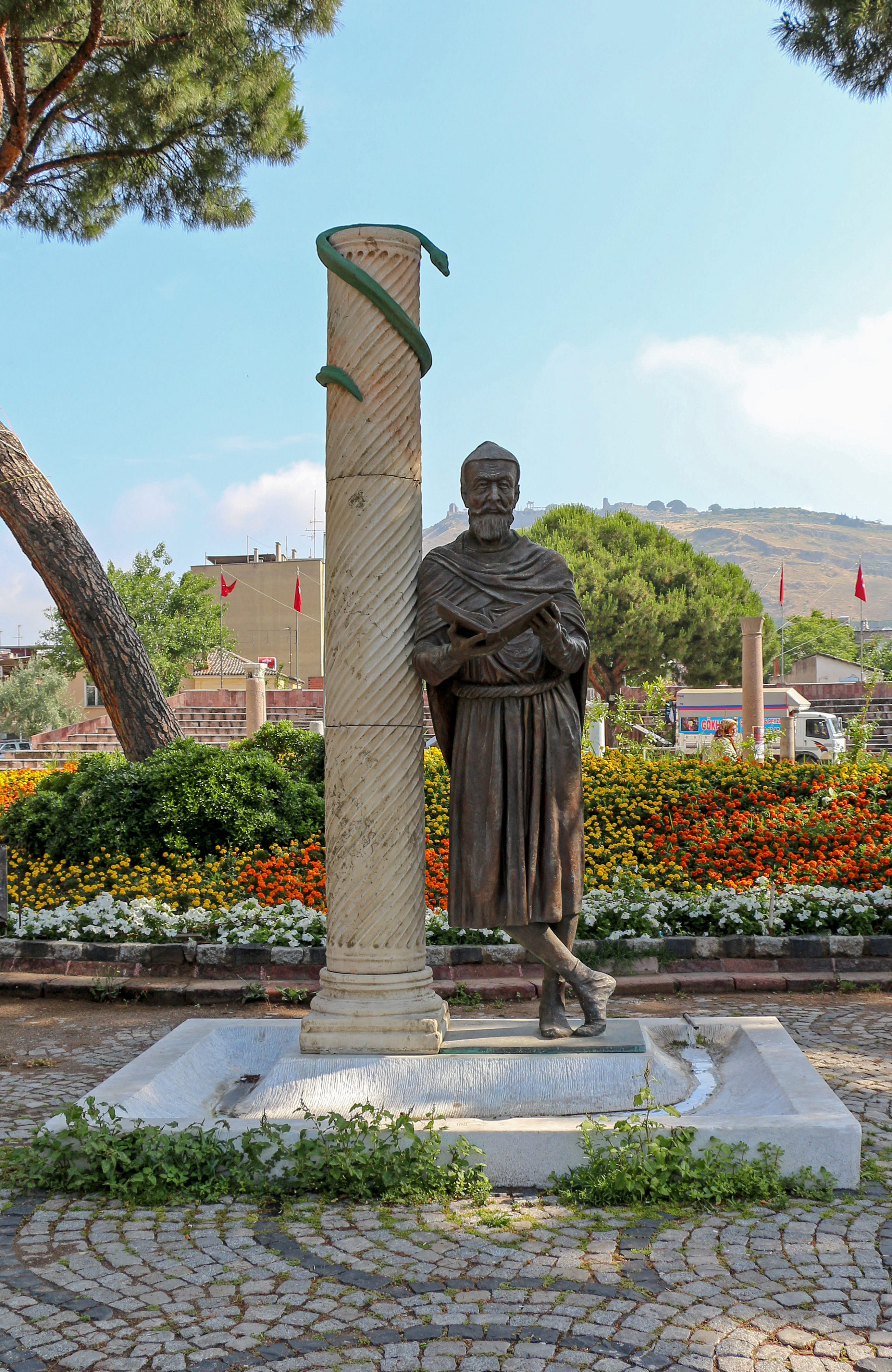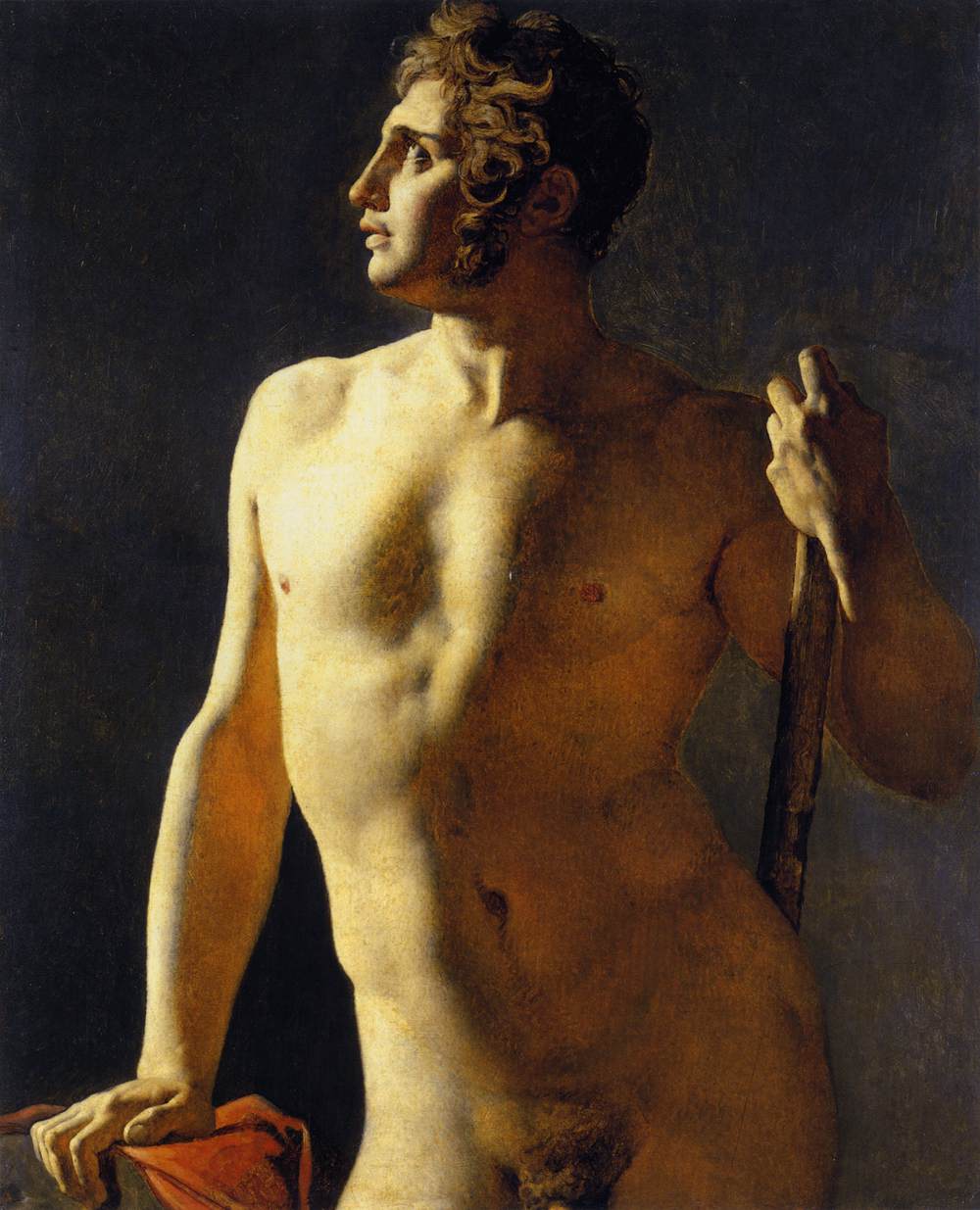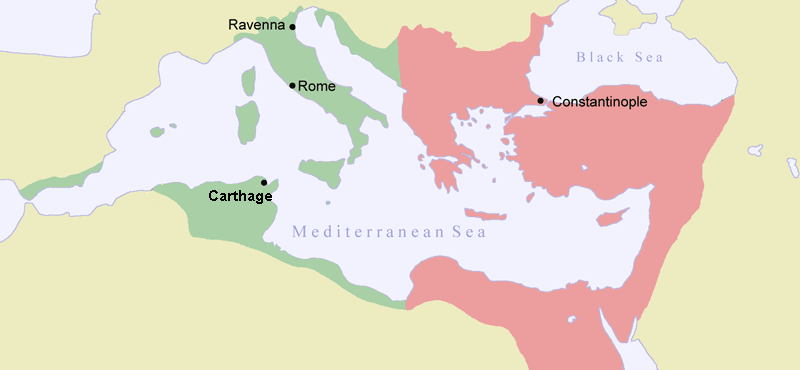|
Erasistratus
Erasistratus (; ; c. 304 – c. 250 BC) was a Greek anatomist and royal physician under Seleucus I Nicator of Syria. Along with fellow physician Herophilus, he founded a school of anatomy in Alexandria, where they carried out anatomical research. As well, he is credited with helping to found the methodic school of teachings of medicine in Alexandria whilst opposing traditional humoral theories of Hippocratic ideologies. Together with Herophilus, he is credited by historians as the potential founder of neuroscience due to his acknowledgements of nerves and their roles in motor control through the brain and skeletal muscles.Wills, Adrian, and A Wills. “Herophilus, Erasistratus, and the Birth of Neuroscience.” ''Lancet'' 354, no. 9191 (November 13, 1999): 1719–20. doi:10.1016/S0140-6736(99)02081-4. Furthermore, Erasistratus is seen as one of the first physicians/scientists to conduct recorded dissections and potential vivisections alongside Herophilus.Ferngren, Gary. “Vi ... [...More Info...] [...Related Items...] OR: [Wikipedia] [Google] [Baidu] |
Anatomy
Anatomy () is the branch of morphology concerned with the study of the internal structure of organisms and their parts. Anatomy is a branch of natural science that deals with the structural organization of living things. It is an old science, having its beginnings in prehistoric times. Anatomy is inherently tied to developmental biology, embryology, comparative anatomy, evolutionary biology, and phylogeny, as these are the processes by which anatomy is generated, both over immediate and long-term timescales. Anatomy and physiology, which study the structure and function of organisms and their parts respectively, make a natural pair of related disciplines, and are often studied together. Human anatomy is one of the essential basic sciences that are applied in medicine, and is often studied alongside physiology. Anatomy is a complex and dynamic field that is constantly evolving as discoveries are made. In recent years, there has been a significant increase in the use of ... [...More Info...] [...Related Items...] OR: [Wikipedia] [Google] [Baidu] |
Herophilus
Herophilos (; ; 335–280 BC), sometimes Latinised Herophilus, was a Greek physician regarded as one of the earliest anatomists. Born in Chalcedon, he spent the majority of his life in Alexandria. He was the first scientist to systematically perform scientific dissections of human cadavers. He recorded his findings in over nine works, which are now all lost. The early Christian author Tertullian states that Herophilos vivisected at least 600 live prisoners; however, this account has been disputed by many historians.Scarboroug"Celsus on Human Vivisection at Ptolemaic Alexandria" ''Clio Medica. Acta Academiae Internationalis Historiae Medicinae. Vol. 11'', 1976 He is often seen as the father of anatomy. Biography Herophilos was born in Chalcedon in Asia Minor (now Kadıköy, Turkey), c. 335 BC. Not much is known about his early life other than he moved to Alexandria at a fairly young age to begin his schooling. As an adult Herophilos was a teacher, and an author of at lea ... [...More Info...] [...Related Items...] OR: [Wikipedia] [Google] [Baidu] |
Pneuma
''Pneuma'' () is an ancient Greek word for "breathing, breath", and in a religious context for "spirit (animating force), spirit". It has various technical meanings for medical writers and philosophers of classical antiquity, particularly in regard to physiology, and is also used in Greek translations of ''ruach'' :wikt:רוח, רוח in the Hebrew Bible, and in the Novum Testamentum Graece, Greek New Testament. In classical philosophy, it is distinguishable from ''Psyche (psychology)#Etymology, psyche'' (), which originally meant "breath of life", but is regularly translated as "spirit" or most often "soul#Philosophical views, soul". Presocratics , "air in motion, breath, wind", is equivalent in the material monism of Anaximenes of Miletus, Anaximenes to (, "air") as the element from which all else originated. This usage is the earliest extant occurrence of the term in philosophy. A quotation from Anaximenes observes that "just as our soul (''psyche''), being air (), holds us ... [...More Info...] [...Related Items...] OR: [Wikipedia] [Google] [Baidu] |
Galen
Aelius Galenus or Claudius Galenus (; September 129 – AD), often Anglicization, anglicized as Galen () or Galen of Pergamon, was a Ancient Rome, Roman and Greeks, Greek physician, surgeon, and Philosophy, philosopher. Considered to be one of the most accomplished of all medical researchers of Ancient history, antiquity, Galen influenced the development of various scientific disciplines, including anatomy, physiology, pathology, pharmacology, and neurology, as well as philosophy and logic. The son of Aelius Nicon, a wealthy Greek architect with scholarly interests, Galen received a comprehensive education that prepared him for a successful career as a physician and philosopher. Born in the ancient city of Pergamon (present-day Bergama, Turkey), Galen traveled extensively, exposing himself to a wide variety of medical theories and discoveries before settling in Ancient Rome, Rome, where he served prominent members of Roman society and eventually was given the position of perso ... [...More Info...] [...Related Items...] OR: [Wikipedia] [Google] [Baidu] |
Chios
Chios (; , traditionally known as Scio in English) is the fifth largest Greece, Greek list of islands of Greece, island, situated in the northern Aegean Sea, and the List of islands in the Mediterranean#By area, tenth largest island in the Mediterranean Sea. The island is separated from Turkey by the Chios Strait. Chios is notable for its exports of Mastic (plant resin), mastic gum and its nickname is "the Mastic Island". Tourist attractions include its medieval villages and the 11th-century monastery of Nea Moni of Chios, Nea Moni, a UNESCO World Heritage Site. Administratively, the island forms a separate municipality within the Chios (regional unit), Chios regional unit, which is part of the North Aegean modern regions of Greece, region. The principal town of the island and seat of the municipality is Chios, North Aegean, Chios. Locals refer to Chios town as ''Chora'' ( literally means land or country, but usually refers to the capital or a settlement at the highest point of ... [...More Info...] [...Related Items...] OR: [Wikipedia] [Google] [Baidu] |
Ceos
Kea (), also known as Tzia () and in antiquity Keos (, ), is a Greek island in the Cyclades archipelago in the Aegean Sea. Kea is part of the Kea-Kythnos regional unit. Geography It is the island of the Cyclades complex that is closest to Attica (about 1 hour by ferry from Lavrio) and is also from Cape Sounio as well as SE of Athens. Its climate is arid, and its terrain hilly. Kea is long from north to south and wide from west to east. The area is with the highest point being above sea level. The municipality, which includes the island Makronisos, has an area of . Its capital, Ioulis, is inland at a high altitude (like most ancient Cycladic settlements, for fear of pirates) and is considered quite picturesque. Other major villages of Kea are the port of Korissia and the fishing village of Vourkari. After suffering depopulation for many decades, Kea has been recently rediscovered by Athenians as a convenient destination for weekend and yachting trips. The populat ... [...More Info...] [...Related Items...] OR: [Wikipedia] [Google] [Baidu] |
Veins
Veins () are blood vessels in the circulatory system of humans and most other animals that carry blood towards the heart. Most veins carry deoxygenated blood from the tissues back to the heart; exceptions are those of the pulmonary and fetal circulations which carry oxygenated blood to the heart. In the systemic circulation, arteries carry oxygenated blood away from the heart, and veins return deoxygenated blood to the heart, in the deep veins. There are three sizes of veins: large, medium, and small. Smaller veins are called venules, and the smallest the post-capillary venules are microscopic that make up the veins of the microcirculation. Veins are often closer to the skin than arteries. Veins have less smooth muscle and connective tissue and wider internal diameters than arteries. Because of their thinner walls and wider lumens they are able to expand and hold more blood. This greater capacity gives them the term of ''capacitance vessels''. At any time, nearly 70% of the ... [...More Info...] [...Related Items...] OR: [Wikipedia] [Google] [Baidu] |
Ioulis
Ioulis or Ioulida (; ), locally called Chora or Hora () like the main towns of most Greek islands, and sometimes known by the island name of Kea or Keos (or earlier Zea), is the capital of the island of Kea in the Cyclades. It has a population of 1,225 inhabitants according to the 2021 Greek census. Modern town The Ioulida of today, while popular with both tourists and middle-class Athenians, is relatively unspoiled in that cars must be left at the entrance of the town, and "life is pretty much the way it has always been." As in Korissia, "the architectural style is not like the typical Cycladic. The heart of Chora is the square with the grand city hall." Ancient town The ancient city (also called Iulis) was celebrated as the birthplace of Simonides, Bacchylides, Prodicus, Erasistratus, and Aristo; it was said to have been built by "Eupylos the son of Chryso the demi-goddess." It led a revolt against Athens in 364/3 BC; an Athenian decree has been preserved imposing a fine an ... [...More Info...] [...Related Items...] OR: [Wikipedia] [Google] [Baidu] |
Cerebellum
The cerebellum (: cerebella or cerebellums; Latin for 'little brain') is a major feature of the hindbrain of all vertebrates. Although usually smaller than the cerebrum, in some animals such as the mormyrid fishes it may be as large as it or even larger. In humans, the cerebellum plays an important role in motor control and cognition, cognitive functions such as attention and language as well as emotion, emotional control such as regulating fear and pleasure responses, but its movement-related functions are the most solidly established. The human cerebellum does not initiate movement, but contributes to motor coordination, coordination, precision, and accurate timing: it receives input from sensory systems of the spinal cord and from other parts of the brain, and integrates these inputs to fine-tune motor activity. Cerebellar damage produces disorders in fine motor skill, fine movement, sense of balance, equilibrium, list of human positions, posture, and motor learning in humans. ... [...More Info...] [...Related Items...] OR: [Wikipedia] [Google] [Baidu] |
Physiology
Physiology (; ) is the science, scientific study of function (biology), functions and mechanism (biology), mechanisms in a life, living system. As a branches of science, subdiscipline of biology, physiology focuses on how organisms, organ systems, individual organ (biology), organs, cell (biology), cells, and biomolecules carry out chemistry, chemical and physics, physical functions in a living system. According to the classes of organisms, the field can be divided into clinical physiology, medical physiology, Zoology#Physiology, animal physiology, plant physiology, cell physiology, and comparative physiology. Central to physiological functioning are biophysics, biophysical and biochemical processes, homeostasis, homeostatic control mechanisms, and cell signaling, communication between cells. ''Physiological state'' is the condition of normal function. In contrast, ''pathology, pathological state'' refers to abnormality (behavior), abnormal conditions, including human diseases. ... [...More Info...] [...Related Items...] OR: [Wikipedia] [Google] [Baidu] |
Ingres
Jean-Auguste-Dominique Ingres ( ; ; 29 August 1780 – 14 January 1867) was a French Neoclassicism, Neoclassical Painting, painter. Ingres was profoundly influenced by past artistic traditions and aspired to become the guardian of academic orthodoxy against the ascendant Romanticism (art), Romantic style. Although he considered himself a History painting, painter of history in the tradition of Nicolas Poussin and Jacques-Louis David, it is his portraits, both painted and drawn, that are recognized as his greatest legacy. His expressive distortions of form and space made him an important precursor of modern art, influencing Henri Matisse, Pablo Picasso, and other modernists. Born into a modest family in Montauban, he travelled to Paris to study in the studio of Jacques-Louis David, David. In 1802 he made his Paris Salon, Salon debut, and won the for his painting ''The Ambassadors of Agamemnon in the tent of Achilles''. By the time he departed in 1806 for his residency in Ro ... [...More Info...] [...Related Items...] OR: [Wikipedia] [Google] [Baidu] |
Stephanus Of Byzantium
Stephanus or Stephen of Byzantium (; , ''Stéphanos Byzántios''; centuryAD) was a Byzantine grammarian and the author of an important geographical dictionary entitled ''Ethnica'' (). Only meagre fragments of the dictionary survive, but the epitome is extant, compiled by one Hermolaus, not otherwise identified. Life Nothing is known about the life of Stephanus, except that he was a Greek grammarian who was active in Constantinople, and lived after the time of Arcadius and Honorius, and before that of Justinian II. Later writers provide no information about him, but they do note that the work was later reduced to an epitome by a certain Hermolaus, who dedicated his epitome to Justinian; whether the first or second emperor of that name is meant is disputed, but it seems probable that Stephanus flourished in Byzantium in the earlier part of the sixth century AD, under Justinian I. The ''Ethnica'' Stephanos' work, originally written in Greek, takes the form of an alphabetical ... [...More Info...] [...Related Items...] OR: [Wikipedia] [Google] [Baidu] |








